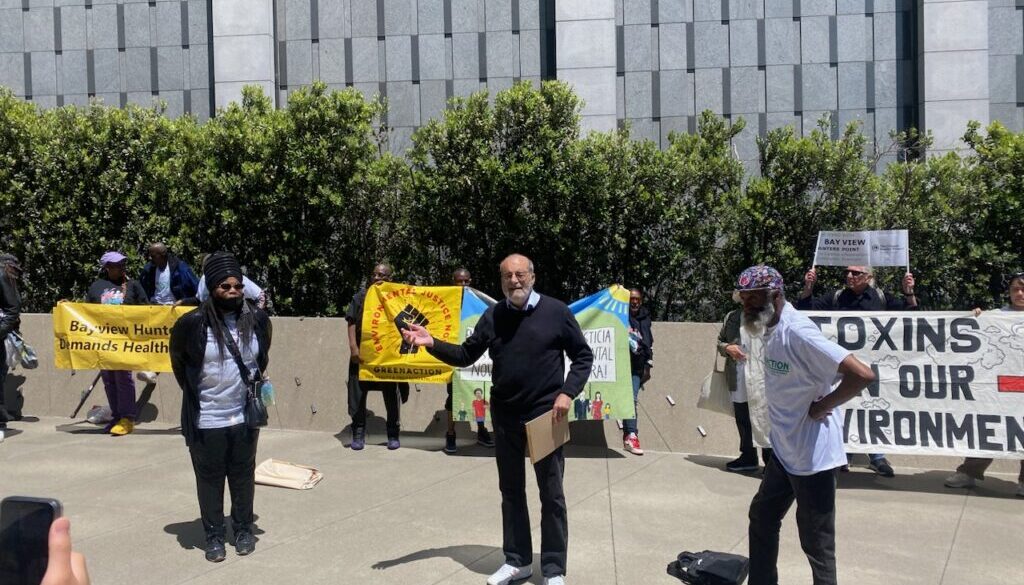US failed to clean up radioactive Superfund site, lawsuit claims
The US government has failed dangerously in its duty to clean up a radioactive former naval shipyard in San Francisco, jeopardizing the health of community members for decades and potentially putting hundreds of thousands of people at risk if plans to turn the site into a residential area materialize, alleges a lawsuit filed on Friday.
The lawsuit, which was filed in the US District Court for the Northern District of California by the group Greenaction for Health and Environmental Justice, alleges that both the Navy and the US Environmental Protection Agency (EPA) violated the federal law that governs Superfund site cleanups known as the Comprehensive Environmental Response, Compensation, and Liability Act (CERCLA).
The Navy has not properly characterized the full extent of the contamination at the Hunters Point Naval Shipyard, according to the complaint, and failed to follow through on its promise to retest all the soil that was improperly remediated by a former contractor, Tetra Tech.
The Navy has also failed to account for how rising sea and groundwater levels, driven by climate change, may exacerbate contamination risks for vulnerable neighborhoods nearby, the lawsuit alleges.
“Our community is sick and tired of the Navy and US EPA ignoring our demands for full retesting and a full cleanup of all the toxic and radioactive waste at the Hunters Point Shipyard,” Leaotis Martin, a long-time area resident and Greenaction member, said in a press release.
Greenaction is seeking a court order requiring the Navy to retest all remediation work completed by Tetra Tech, update its radiological cleanup goals so that they determine human health risks according to the EPA’s standards, and follow the latest scientific data on seas level and groundwater rise in its cleanup plans, among other remedies.
The EPA declined to comment to address the allegations. The Navy did not immediately respond to request for comment.
A threat to health and safety
From 1948 to 1960, Hunters Point was home to a military lab used to study the effects of radiation and nuclear weapons, which left soil, surface water and groundwater contaminated with radionuclides, polychlorinated biphenyls (PCBs), pesticides, heavy metals, and other toxic compounds. In the 1950s, the Navy used the shipyard to decontaminate 79 ships that had been blasted with radiation during nuclear weapons tests in the South Pacific. The shipyard was designated as a Superfund site by the EPA in 1989.
While the Navy originally promised to fully clean up the shipyard, removing all radioactive contamination and other hazardous chemicals, it eventually discovered that this project would prove more costly and intensive than it had anticipated, leading the Navy to instead propose “capping” the contamination to cover it up, according to the complaint.
An EPA memo released in 2022 implied that Hunters Point may remain unfit for unrestricted residential use after the Navy cleanup, since the cleanup would violate Proposition P, a voter initiative calling for the agency to fully clean the shipyard.
“There is clear and convincing evidence of human harm being done to residents and workers at Hunters Point Navy Shipyard and at Treasure Island,” Dr. Ahimsa Sumchai, medical director of the Hunters Point Community Biomonitoring Program, said at a press conference in San Francisco today. Treasure Island housed another former naval facility in the San Francisco Bay area. “There is clear and convincing evidence and historical record that the US Navy and the federal government is the cause of that harm,” she said.
The biomonitoring program, which launched in 2019, has identified two clusters of cancers near Hunters Point that its website says have been proven to be caused by radiation exposure. The program has conducted over 120 screenings of high-risk residents and workers, commonly detecting arsenic and other harmful chemicals in their urine.
While neighborhoods near the site have already long been overburdened by pollution, redevelopment plans could soon put even more people at risk, say the complaint. Plans are in place to build about 12,000 residences on the still-contaminated site, along with a school, office towers, and parks.
In February, the Biden administration announced that it would allocate over $1 billion to help clean up the more than 1,300 Superfund sites on the EPA’s priority list. Bureaucratic hurdles that prioritize politics over public health have slowed progress in cleaning up such sites across the country, critics say.
(Featured image: Concerned residents and environmental justice advocates announce the lawsuit outside the US courthouse in San Francisco on June 28. Photo by Skylar Sacoolas, Greenaction.)




